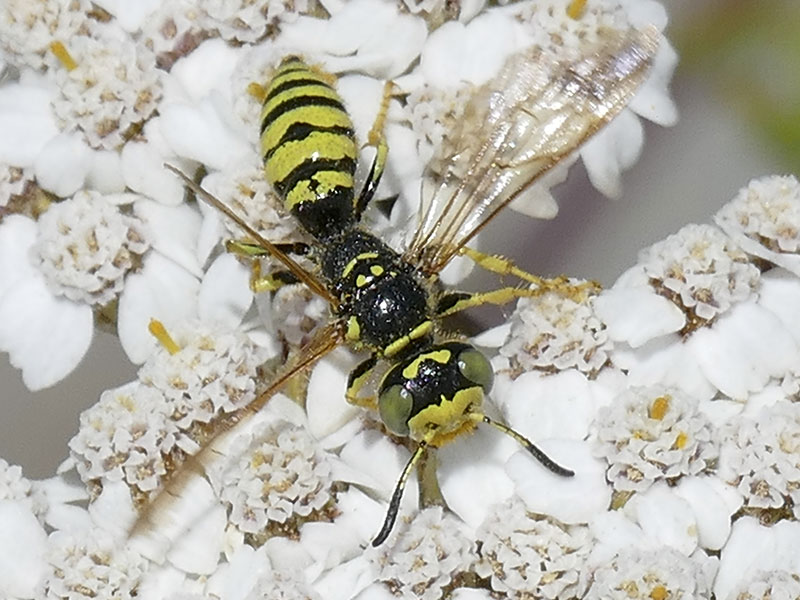Philanthus sp.

07/13/2018 Point Wilson Beach, Fort Worden State Park, Washington
07/30/2007 Port Angeles, Washington
07/01/2007 Dungeness National Wildlife Refuge, Washington
07/19/2006 Port Angeles, Washington
07/27/2006 Port Angeles, Washington
07/27/2006 Port Angeles, Washington
08/03/2006 Port Angeles, Washington
08/03/2006 Port Angeles, Washington
08/03/2006 Port Angeles, Washington
07/13/2018 Point Wilson Beach, Fort Worden State Park, Washington
07/13/2018 Point Wilson Beach, Fort Worden State Park, Washington
07/13/2018 Point Wilson Beach, Fort Worden State Park, Washington
07/13/2018 Point Wilson Beach, Fort Worden State Park, Washington
07/13/2018 Point Wilson Beach, Fort Worden State Park, Washington
15 - A female Beewolf, Philanthus sp., finds her nest hole, digs it open, then after a short interval emerges and covers the hole.
Beewolves, Philanthus sp., prey upon bees, especially sweat bees (family Halictidae). Females capture bees, paralyze them with a sting and carry them to an underground nest. The female lays an egg on the first bee captured, then continues to provide live bees to the larva. Excavations extend several inches underground (in some species up to three feet). Sometimes bee wolves create nest holes in the same patch of sandy soil as the bees they prey upon. Adult bee wolves feed on flower nectar.